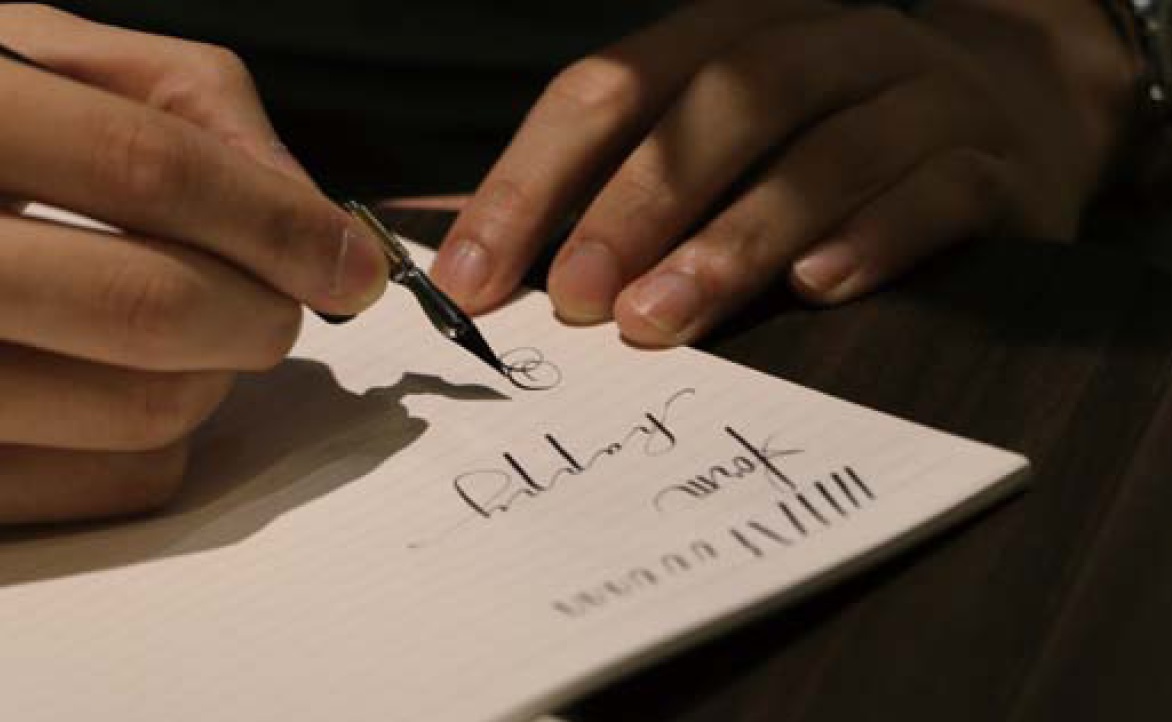
Calligraphy is gaining new followers as people rediscover the art of handwriting
By Kate Kim
Words and letters are all around us in our daily lives. We may wake up and check our text messages before breakfast, we type documents at work and we might browse Instagram before going to bed. Gradually, it seems touch screens and computer keyboards have replaced pen and paper, and we hardly ever write the old-fashioned way. But recently people have begun to rediscover the pleasures and uniqueness of handwriting.
“Calligraphy has more feeling than the digital texts. It’s more of a human touch,” says Brenda Ching Man-wah, who chairs a local calligraphy lovers’ group, the Alpha-Beta Club. Ching has been giving regular Western calligraphy lessons at the club and this year, she had to turn students away. Time and space constraints mean she could only enroll 12 students out of the 40 to 50 applicants who applied.
“I think [for] people who would like to learn calligraphy, maybe it is quite interesting for them, [and] they want to try something new, something nice,” says Ching. “The computer is too common for them. They would like to make something personal, in their style.”
Ching was introduced to calligraphy by her English teacher in secondary school, and she has devoted herself to the art for years. Currently working as a school teacher herself, she spends her spare time promoting the art of Western calligraphy in Hong Kong at workshops and exhibitions.
In her workshop, Ching teaches students four fundamental scripts, foundational, italic, Gothic, and copperplate. These are what she calls the “basic things” of calligraphy.
Though people learn the same scripts and use the same tools to write, Ching says calligraphy can be very personal. For example, different writers express different feelings by using different scripts. If they want to convey elegance, they can use copperplate flourishes and slanted italic lines.
As for tools, calligraphers can choose the typical aluminum dip-pen, with a nib inserted at the end, or they can create their own pen using different materials. Ching once asked a hawker to give her some feathers so she could make her own quill pens.








































